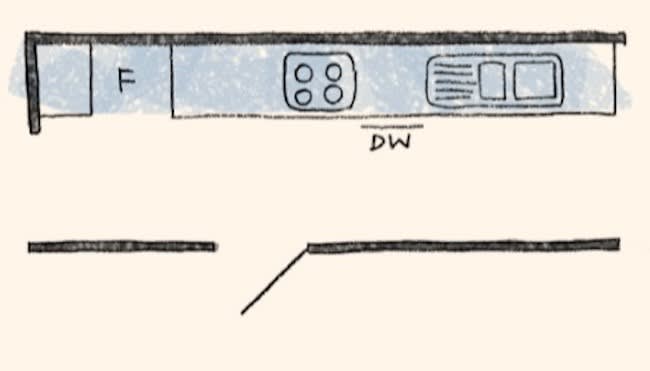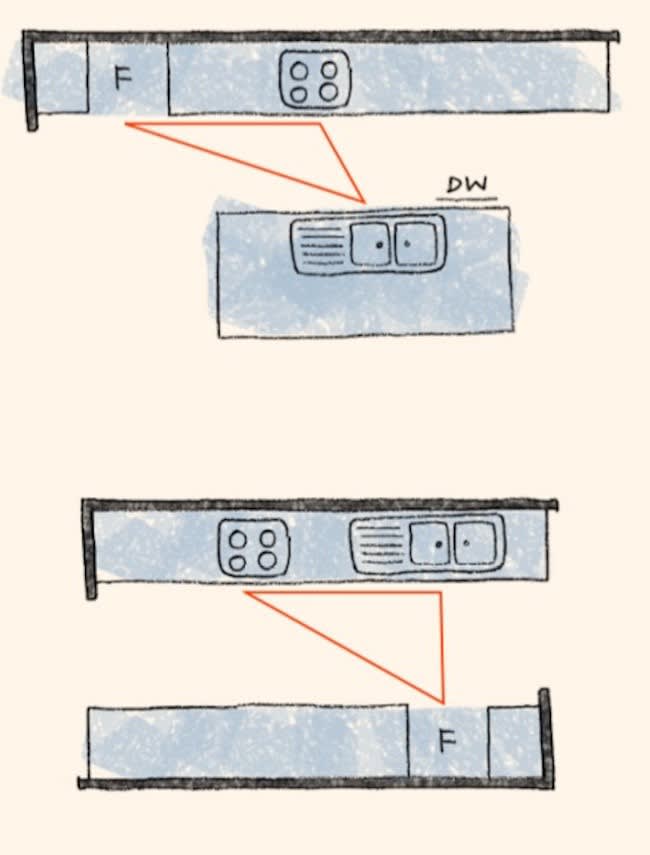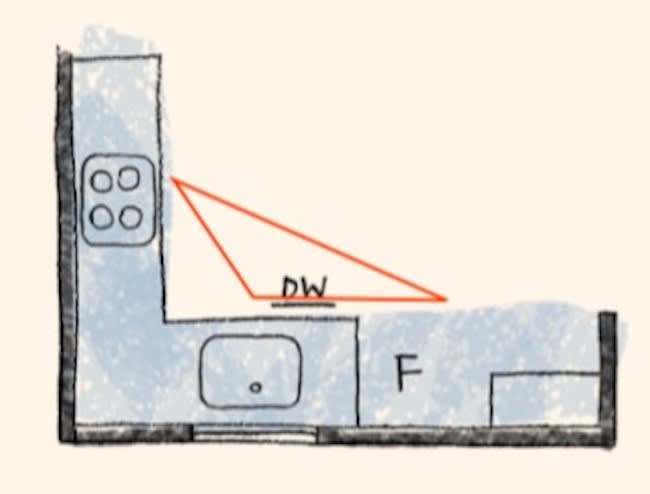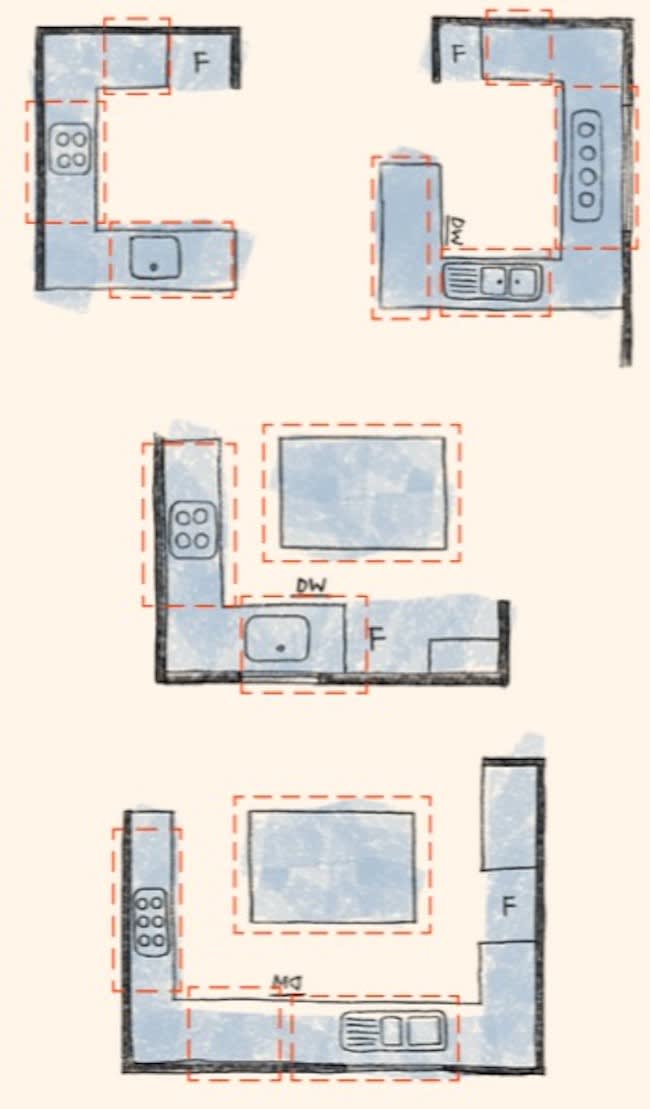Closed off kitchens may make a comeback in the home
Before you knock down your kitchen walls to increase the value of your home with an open plan, have a think about this: the closed off kitchen could make a comeback in future years, according to Secret Agents’ latest bulletin report.
Trendsetting architects are returning to pre-war designs where kitchen and entertainment areas are separated. There is an emerging market for this kind of home.
Many parents who have raised their family in an open plan kitchen would understand that, whilst great for inclusion, there are certain drawbacks to a lack of four walls.
There is no escaping the noise from the television, no way of treating cooking as a peaceful experience, and no way to hide the mess that the kids leave on the dining table from plain sight. Further, when guests come over, it is often impossible to get them to move to the living room.
A closed off kitchen allows the user to relax in a calming environment and momentarily retreat from the chaos of raising a family. It is also great for those who don’t want to be on show the entire time when guests come over.
Layout aside, the future kitchen from a technological standpoint is looking bright. We might even begin to see chef-less kitchens. In fact, that future is not too far away.
Moley, the world’s first robotic kitchen, is currently being crowdfunded for a launch in 2018. The company hopes to sell Moley for a price comparable to the average cost of kitchen refurbishment, around $46,000AUD.
“In more realistic terms however, Secret Agent believes that the evolution of the near-future kitchen will be less of a romantic tech fantasy,” the report stated.
Technology will not cook for us, but it will do what it does best for humanity: automate the mundane and menial, while enhancing the core experience. There is still joy to be had in cooking for yourself.
“Expect in-built Apple or Google devices in your kitchen hardware and smarter appliances. Maybe a countertop touchscreen (not voice activated, because let’s face it - we wouldn’t want Siri’s attitude in the kitchen) that retrieves your favourite recipe at your command, prompting instructions according to the preparation time. No more scrolling through recipes on your phone or tablet with your grubby, greasy hands mid-way through preparing food. No more overcooked roast chicken,” the report suggested.
Imagine a more seamless workflow, with taps switching on automatically and fridge doors that open as you approach.
Range-hoods that adjust their setting according to the intensity of your cooking. The less you need to touch, the less there is to clean.
There will be more time for enjoying the food you’ve made and the company around you, and less time required to do the actual cooking.
Many of these technologies already exist. Yet until smart home technology becomes ubiquitous and accessible to every household, it remains a future for most of us.
Humans have been cooking since the beginning of time, and it’s not about to change just because we can make robots cook like a chef.
Perhaps the best version of a kitchen we can look forward to is one that cleans itself. Now, that’s something worth developing.
Kitchen layouts can generally be divided into 4 shapes: I, L, II and U, according to Secret Agent’s latest bulletin report.
“Secret Agent thought it would be interesting to take a sample of properties in a niche market of Melbourne and find out which kitchen layouts were most popular. Since we deal with a lot of period homes within inner Melbourne, 507 Victorian and Edwardian terrace houses from this region were selected for the comparison. The houses were all sold in 2016. Regardless of the layout, on average, kitchens were found to be approximately 12sqm in size. The rest of our findings are shown on the right,” the report stated.
I (Single wall kitchen)
• By far this is the least common configuration amongst terrace houses, only present in about 6% of homes. However, Secret Agent notes that this is highly popular in new one and two bedroom apartments and studios with limited internal space.
• This layout is usually found in dwellings with limited floor space, as it usually shares its circulation path with other areas of the house.
• The work triangle doesn’t exist, but that doesn’t mean it’s impossible to cook! However, this kitchen type usually accommodates only one person cooking at a time.

• Due to the lack of counter space, the dining table often doubles up as additional work room. Mobile kitchen islands are also a convenient alternative.
• The single wall layout may suit those who don’t cook often or spend much time in the kitchen, as it offers the bare minimum utility while occupying the least amount of space. You’ll also have your back to your guests when cooking, which isn’t a very sociable gesture.
• Some of these kitchens are also designed to be hidden behind sliding or pocket doors to minimise visual clutter.
II, or “Gallery” (Parallel benchtops)
• This kitchen layout accounts for just under a fifth of the homes studied. Taking its name from the galleys (kitchens) of ships and airplanes, this layout is common in commercial kitchens for its highly efficient nature.
• Essentially, this is a single wall kitchen with a benchtop island, or two parallel single wall kitchens. The former is a more social option due to the island, with the latter having limited face-to-face interaction with guests.

• Depending on the size of the kitchen, this II-layout allows more than one person to work comfortably in the kitchen.
• Foot traffic in galley kitchens can be disruptive, depending on the distance between both counters. Ideally, it should be between 1.2m to 1.6m, with greater widths making it inconvenient to walk back and forth. Anything narrower than the minimum suggested would restrict movement with more than one person in the kitchen, particularly when opening drawers and ovens.
L-shaped
• Just under a fifth of the homes observed had this kitchen layout.
• The work triangle does not have any obstructions in the path, and can comfortably fit two persons cooking.
• Similar to the I-layout, the L also commonly shares its circulation space with the dining area or a corridor. It is a more flexible option that suits any room size, while offering an improved workflow from the simpler I-layout.

• In open plan homes, it lacks the social connection with the living and dining areas, as you will still have your back to your guests.
• Instead of adding an island (turning this into a U-layout), some may prefer to have a regular dining table nearby. This way, it provides an all-round dining surface, as opposed to an island which only provides seating on one side.
U-shaped
• This is the most common kitchen type, making up two- thirds of all the terraces we looked at. We have also included what most would call the “G-shape” or “L-shape with island” as part of this group for simplicity, as it has the same wrap-around, three-sided layout.
• The U-shape offers the most flexibility and variation, on top of being a highly social configuration. It suits both smaller and larger homes, in both open plan and closed plan layouts.
• This kitchen type is divided into zones (casual dining, preparing, cooking, cleaning), as opposed to a proper work triangle, allowing multiple people to work in the kitchen at any one time.

